Story and photos by JaneA Kelley

I remember the day I realized my cat was really old.
She was sitting on my lap, curled up for warmth and comfort, and suddenly I realized just how little she weighed. My once-robust Siouxsie Mew, who had once been threatened with a diet because she was getting too fat, now barely tipped the scales at 7 pounds.
Not that I hadn’t logically known that before—after all, I diligently took her to the vet for her semi-annual senior checkups and kept tabs on her blood work—but sometimes it just takes a while for the emotional realization to kick in.
Once I realized how light she was, and I thought about how old she was (17, at that point), it also occurred to me that Siouxsie and I would have a lot fewer tomorrows together than yesterdays. My eyes brimmed with tears and I looked down at her frail body on my lap and told her, “I promise you, you don’t have to end your life in pain. When you tell me it’s time, I’ll make that final appointment because I love you enough to let you go rather than leave you suffering. Meanwhile, I’ll cherish every moment we have together.”
She looked up at me as if she knew exactly what I’d just told her, and she rubbed my hand with her cheek.
The process of grief is never easy, but when you have an old and/or sick cat, the grieving process starts long before your feline friend actually passes away.
Elisabeth Kübler-Ross once categorized the five stages of grief as denial, anger, bargaining, depression, and acceptance. When you grieve, though, you may not go through all of the stages in the order in which she placed them. In fact, you may not even go through all the stages at all.

Siouxsie used to love her “shoulder rides.” When she stopped enjoying them, I knew she was really feeling her age.
So, what exactly does the grief process look like, according to the Kübler-Ross model?
The first stage is denial. It helps us to survive the loss. The world becomes meaningless, and we move into a state of shock and numbness. That helps us get through the first realization and gives us the bandwidth to only deal with as much as we can handle at any given time. It’s the first stage of not just the grief process but the healing process as well. I remember going kind of numb when I realized just how old Siouxsie really was. But at the same time, I knew I couldn’t numb out or close the connection between Siouxsie’s heart and mine—when a cat is old and frail, they need your love and closeness more than ever.
Next comes anger. It’s a necessary part of the healing process for many people. The more you feel your anger, the more it will begin to fade. You may feel angry at your veterinarian for giving you bad news. You may feel angry at yourself because you can’t afford an expensive treatment for your cat. You may feel angry at God (or whichever deity or deities you believe in) for giving you such a short time with your beloved cat. Anger helps you break through the denial. While I don’t remember feeling angry about Siouxsie’s inevitable demise, I certainly was angry at the people in my life (who are fortunately few and far between) who didn’t take my sadness and grief seriously because Siouxsie was “just a cat.”
Bargaining is the next stage. At this point you start wishing there was a way your beloved cat could be saved. You often get a case of the “shoulda/coulda/wouldas” when you’re bargaining, thinking that if only you’d noticed your cat’s symptoms earlier, if only you’d pushed for more answers, if only you’d had the money to pay for that treatment. The trouble with this kind of thinking is that when you begin to blame yourself, you extend your own pain even as you try to negotiate your way out of it. As a part of bargaining, you may decide to dedicate yourself to a cause, to helping other cats who are in the same situation. I’m not going to lie; my experiences with Siouxsie and with my current elder kitty, Thomas, were the inspiration behind my new blog, The Ninth Life. I’m hoping I can help people who are in a similar place with their own cat to be able to manage their grief and find a compassionate place to share their feelings.
Then comes depression. You come to the sad realization that you have a lot fewer tomorrows together than yesterdays, and that can break your heart into a million pieces. This is a totally normal feeling and a normal part of grief. The loss of a beloved cat, either in the future or in the recent past, is a really depressing thing. If you already have depressive tendencies, as I do, the depression of the grief process can hit really hard. When I lost my Dahlia to cancer at the age of six, and then another cat six months later to one of those freak one-in-a-million surgical complications, I was so profoundly depressed that I didn’t even realize it at first. It affected everything from my personal life to my performance at work.

Siouxsie loved coming to work with me
I’m fortunate that when I was going through the end of Siouxsie’s life, I was surrounded by supportive friends and I worked at a place that allowed pet bereavement days—unlike my previous employer, who didn’t even care that I’d lost two cats in six months and assumed my performance problems were totally unrelated to that. Let’s just say I have feelings about that. The depression I felt when I realized Siouxsie was dying was a lot easier to handle, being in a place where I felt supported by everyone from my friends to my employer.
Finally, there is acceptance. This doesn’t mean that everything is suddenly okay; it means that you understand the reality of your upcoming loss. You learn to live with that feeling of emptiness, and eventually you can smile through your tears. I can’t count the number of times I bounced between numbness, depression and acceptance as I prepared for Siouxsie’s inevitable passing. I can’t count the number of times my eyes filled with tears as I stroked her once-black and now-faded fur and felt her bones underneath my fingers. I had her on meds for hyperthyroidism, but she never did gain back her weight despite having a good appetite. I can’t count the number of times I told her, “Siouxsie Mew, I love you so much, and I’m so grateful that you’ve been such a wonderful part of my life. Thank you.”

Siouxsie loved her heated bed; it made her aching joints feel better
You may not go through all the stages of grief. You may go through them in a different order than Kübler-Ross described them. As I mentioned, I bounced back and forth between numbness, depression, and acceptance. I don’t recall feeling angry or bargaining, as such. I do know that one way I’ve chosen to honor Siouxsie’s life is by writing a blog to help people get through their own grief processes.
How have you dealt with the “pre-grief” stage that happens before your cat passes away?
JaneA Kelley is the author of the award-winning cat advice blog, Paws and Effect. Her new blog, The Ninth Life, is a place where she talks about her elder cats’ journeys, and the journeys of some young cats who turned out to be ninth-lifers, too. Her work has also appeared on catster.com and in Catster Magazine.


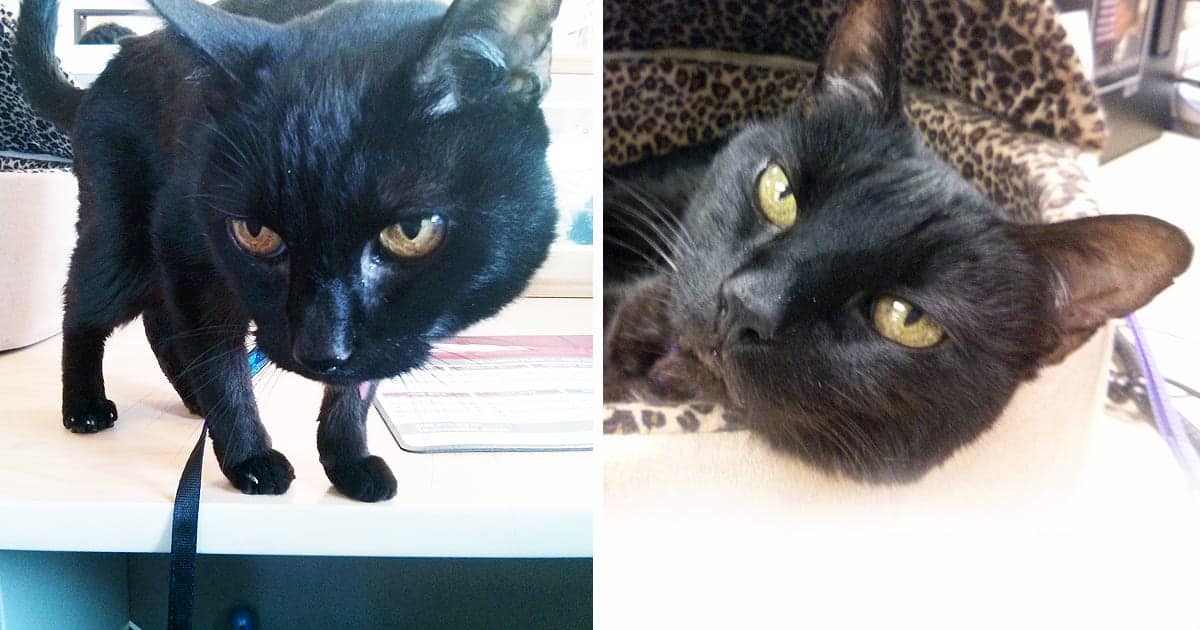
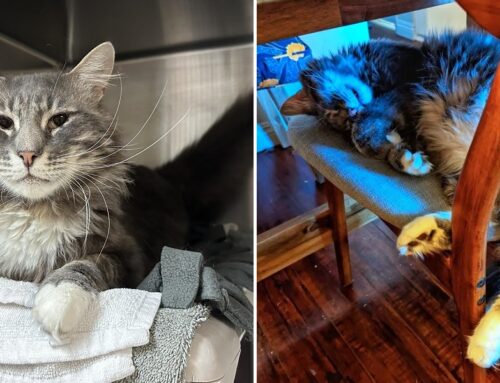

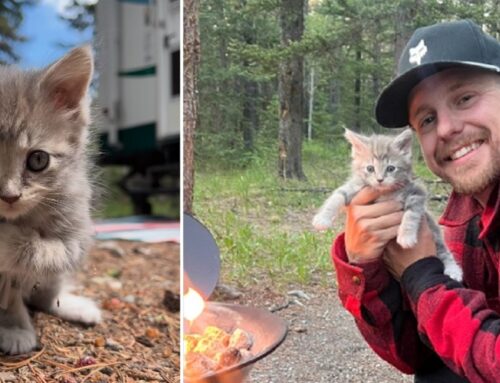

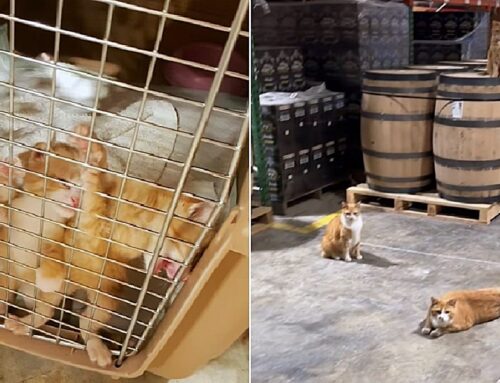



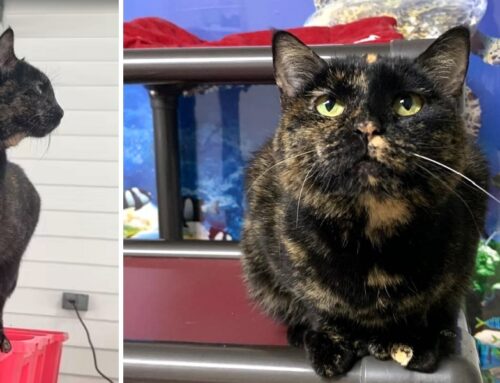
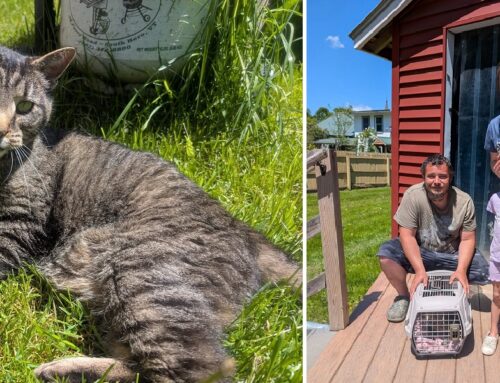
Jayne, Siouxie Mew may have been a part of your life, but you were her whole life. That makes her a lucky girl, and you-worthy.❤️
Thank you so much. I certainly feel blessed to have had her in my life for 19 years.
Wow…I am going through this right now..thank you for putting it into words I can read over and over…
Because sometimes it is overwhelming
We’ve definitely been there as well. Give your fur-baby some love from us too!
I’m glad I could be of some support to you during this difficult journey. <3
I am facing this reality with Fergus. He will be 20 in November. He is beloved and I think I am very much in denial that I may have to make that decision. He is getting frail now but his health is pretty good. A very expensive renal diet and liquid chicken flavoured blood pressure meds help. I would do anything for him.
Yes, I hear you there. I would do anything I could for my cats, too. I’m glad that his special diet and blood pressure meds are helping to keep your Fergus healthy. <3
I remember Siouxsie well from your blog and it was sad to see her go. This resonates with me so deeply right now, because I’m in the pre-grief stage with our 17-year old cat. I know he won’t be with us for very long and I’ve cried Niagara Falls over this already! I talk to him constantly, asking him to give me a sign when it’s time. But as long as he’s seeking out the sun puddles and the company of the humans and his other cat buddies, I know that there is still a spark of life left in those old bones.
Having the support of friends, colleagues and one’s employer is a huge deal. Cats are family, and when you have the support of people around you, that is a wonderful thing.
Yes, absolutely. I’m sorry you’re dealing with this with your beloved ninth-lifer. I know when I first realized it was time for Siouxsie, I’d awakened in the wee hours of the morning after having fallen asleep in my chair, and when I got to my bedroom I saw Siouxsie sitting under my night stand. I heard as clear as day, “Mom, I’m tired.” I told her, “Siouxsie, I hear you and I honor your wish. Could you please help out my logical mind by giving me a certain sign that you’re done and want me to help you pass?” She curled up next to me under the blankets, as she always did, and when I rolled over and gently moved her, she peed all over me! I wasn’t angry, of course, but I knew beyond all doubt that she was going to really start losing her dignity if I didn’t help her along to the other side.
You don’t always get such clear signs, though, and that’s what makes the decision to proceed with euthanasia so heartbreaking: you just never know for sure. The thing that put me over the edge and moved me to make that call to my vet was that I remembered him saying, “Better a week too early than an hour too late.”
It sure as hell didn’t hurt any less, though! Blessings to you and your kitty friend.
I have a 20 year old cat diagnosed with nasal cancer. Everyday right now is a gift but sometimes when I look at her nose and watch my dad cuddle her, I’m struck with how much our lives are going to suck without her. She was my sister’s cat but came to live with us after she chose my dad as her person. He had just lost my mom and he really needed her and she needed him. After living with us for less than 6 months, we heard the fateful words, “she has nasal cancer. That doesn’t mean she will die tomorrow or even the next day but she is sort of put on hospice and will be on prednisone until she eventually dies. It will probably be in her sleep which is a blessing in disguise but it also means everyday with her could be her last. Living with that kind of realization makes us enjoy our time with her that much more. So far she’s slowed down a bit but still is jumping, eating, climbing a bit (with stairs we have added in various special spots to help her get around safer) and still preferring to sleep with my dad when she can. I’ve cried looking at her thinking of how she will someday not be here. I’ve denied her having cancer thinking, “it’s an injury” then I told myself, “it was just a stuffy swollen nose that needs an humidifier” but alas none of this has changed the fact she has a tumor in her nose that will eventually kill her. I have two other cats that are mine and they love her. I watch them greet her each morning and night happily and think about how they will grieve when she’s gone. Knowing she will be gone from all of us doesn’t make it any easier or less painful and in fact it’s even more painful knowing everyday I’m living with fear that it will be her last. Thanks for sharing this with everyone.
When they get to be that age, and especially when they have a terminal illness, every day is a gift. You’re right that your other cats will grieve in their own ways when she’s gone. Thomas and Bella grieved when Siouxsie died. I know this is going to sound kind of “woo-woo,” but I had a session with an animal communicator the day before Siouxsie’s euthanasia, and she helped them understand what was going to happen and why.
Compare that to the grief Thomas went through when Dahlia died, when that entire week of her worst illness, I was in “crisis mode,” and I wish I’d had the chance to give him more of a heads-up. 🙁